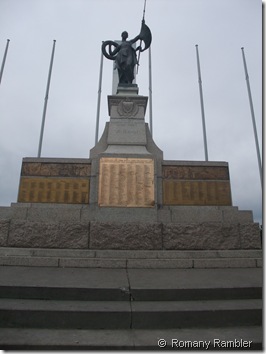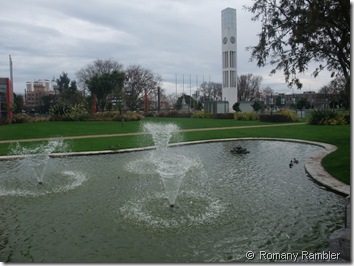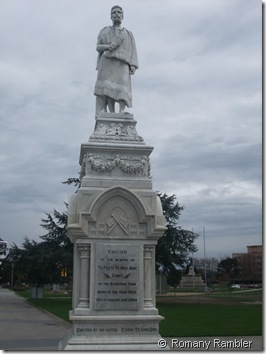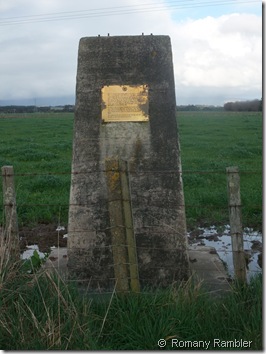The city of Palmerston North, known to the locals as “Palmy” is a half hour drive from our rural weekend stop-over at Kiwitea. Situated on the banks of the Manawatu River and nestled at the foot of the impressive Tararua Mountain Range, this is a vibrant city of about 80,000. The city was first named Palmerston, in honour of Viscount Palmerston, a former Prime Minister of Great Britain. The suffix North was added in 1871 by the Post Office to distinguish the settlement from Palmerston in the South Island, though locals still widely refer to the city simply as Palmerston or "Palmy".
We took a walk through The Square, a seven-hectare park of lawn, trees, lakes, fountains, and gardens in the centre of the city. The War Memorial was dedicated to those who perished in WW1. The bronze figure represents the mothers of the fallen as she looks in grief to where her sons lie dead in foreign soil. She carries a wreath in remembrance and the New Zealand Ensign in triumph.
The Butterfly Lake was officially opened in 1909 and wild fowl were released. The pretty little bridge is the fourth to cross the lake, and the water jets were installed in 1960. We crossed over the bridge and gazed down at the tranquil scene of ducks paddling around in the lake as water bubbled from the small fountains.
A handsome white marble statue dedicated to the memory of Te Peeti Te Awe Awe, chief of the Rangitane tribe (1820-1884) also stands in the square. He was instrumental in the sale of Palmerston North district to the government in 1865, and served with the government forces during the Maori Wars. He was presented with a sword and Union Jack in recognition of his services.
On the way back to Kiwitea we stopped at a rather plain memorial on the roadside just outside Cheltenham. We must have passed this concrete plinth hundreds of times and had no idea what it was. Today was the day to find out what it was all about, and I carefully jumped over a wide ditch filled to the brim with rain water to get close enough to read the sign.. The Historic Places Trust brass plaque is very weathered and relates that the first aeroplane to land in Feilding touched down on this site in 1920. The Manawatu Aero Club was formed in 1928 and their planes used this site for many years. The concrete plinth was the base for both the fuel tank and the pole on which the wind sock was flown.
It is amazing how much history is dotted about in these little towns - there is always something new to discover.




No comments:
Post a Comment